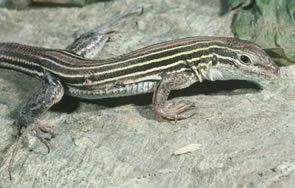
Cnemidophorus sexlineatus
Photo by RW Van Devender
Description: 6-9.5 in. (15.2-24.1 cm) Six-lined racerunners have six light stripes that can be yellow, white, pale gray, or pale blue. Males have well defined stripes and a blue belly. Young are patterned similarly to adults.
Feeding/Diet: They usually eat insects and other arthropods.
Reproduction: Females lay 2 to 4 eggs per clutch at shallow depths in soil, rotten wood, or similar material. Sawdust piles are favorite nesting sites for this species. Most clutches are laid in May and June and hatchlings appear from late June until early September.
Miscellaneous: This species is usually active in very warm or hot weather. They are also very bold, but when pursued, they take refuge in vegetation, under boards or stones, or in burrows. They got their name because they usually win the race against the would-be collector.
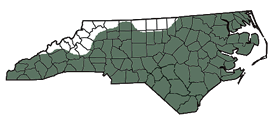
The shaded region represents the range of the six-lined racerunner in North Carolina.
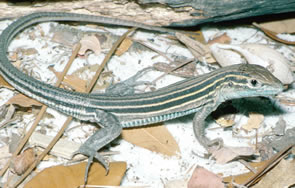
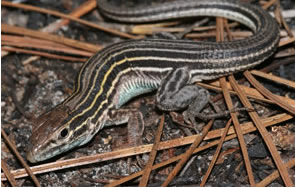
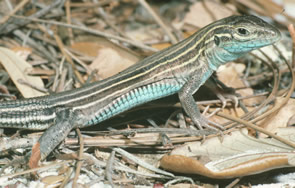
Male racerunners may have a blueish coloration.
Photo
by RW Van Devender
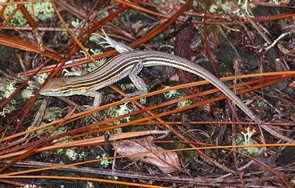
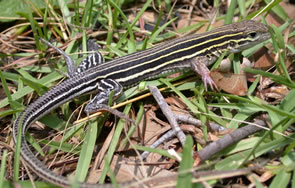
Photo by Jeff Hall
Photo by JD Willson
